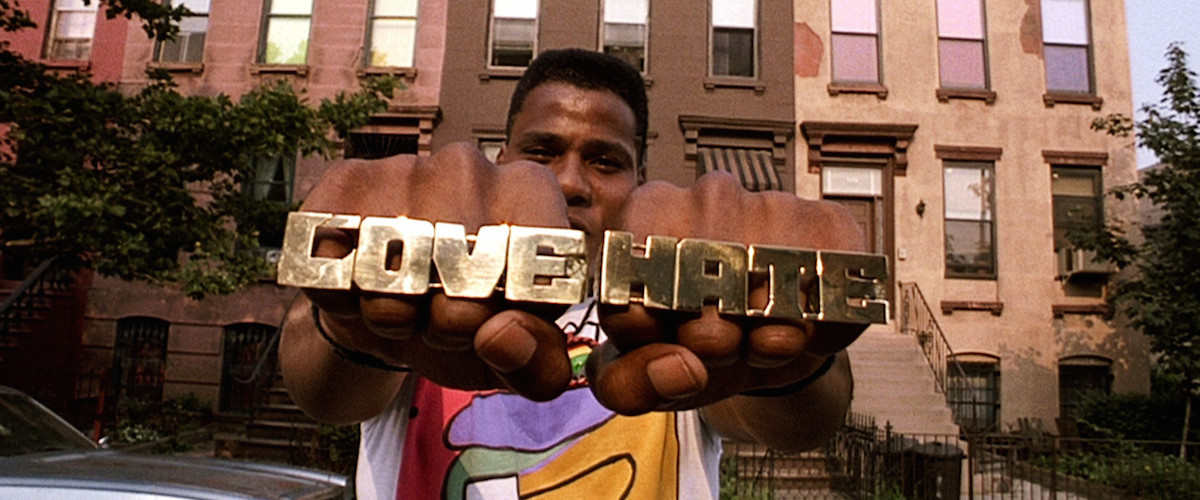
Spike Lee’s masterpiece is now 31 years old. I witnessed the film for the first time last year on it’s 30th anniversary, and I watched it again last week coincidentally only days before the death of George Floyd, which eerily mirrors the on-screen death of Radio Raheem. Spike Lee recently commented on this climactic scene saying, “It was a hard scene to shoot. And for 31 years it’s been a hard to scene to watch.” It’s hard because this scene transcends a fictional narrative, and shows up in our world today.
Events like this prove the film’s enduring relevance. Tackling racial issues head on, Spike Lee shows us the truth of human behavior in this film. Set on the hottest day of the summer, the story follows the lives of various residents on a racially tense Brooklyn Street. There are several characters: Mookie (played by Spike Lee) who delivers for the local Italian owned pizzeria on the corner, Sal (Danny Aiello), the Italian owner of the pizzeria, Radio Raheem (Bill Nunn), a neighborhood local who sports the iconic knuckle rings of “love” and “hate” with a boombox playing Public Enemy’s Fight The Power, Tina (Rosie Perez) who dances in the film’s opening credit sequence and is Mookie’s girlfriend, Da Mayor (Ossie Davis), an old man labeled as a drunk who proves to contain hidden wisdom, and many, many more that would take too much time to list. But what’s so impressive about each of these characters is that not a single one of them is surface level or cliche. In a film that balances so many subplots and “minor” characters, all of them feel major, and all of them have a story. Spike Lee shows a deep empathy for everyone in this film, and it’s this love and deep knowledge of identity for all of these characters that makes the story work as good as it does. It’s stylized to the core in the best way possible and presents complicated characters that are impressively well developed for only a single day of story.
As we follow each of these character’s lives sweating throughout the neighborhood tensions begin to rise in small, but significant ways. But nothing is forced or faked here to deliver artificial conflict. Everything feels earned as the day in the story progresses and the heat rises. When considering the violent outcome of the film, it’s difficult to place the blame on any one person or any one issue. The blame could be shifted onto Sal for smashing Radio Raheem’s boombox, but he stayed open late to serve other people in the neighborhood and got attacked because of it. The blame could fall to Radio Raheem for attacking Sal, but a piece of his identity was smashed along with his boombox, and he was just trying to make his voice heard. Blame could also fall to Mookie for smashing Sal’s windows, but how can we blame him for demanding action after a murder? Perhaps if circumstances were changed by just a little…if people understood each other just a bit more…if there was just an easier way to communicate…then maybe doing the right thing wouldn’t seem so murky.
